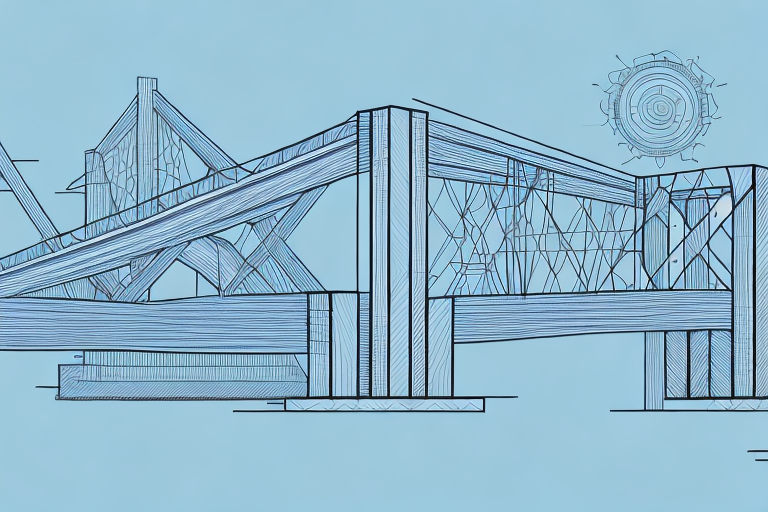Are you interested in advancing your studies in structural engineering? Pursuing a PhD in Structural Engineering in the USA is a fruitful journey that comes with numerous benefits, including research opportunities, a dynamic career, and a chance to be part of the growing field of structural engineering. If you’re considering this path, this article offers a comprehensive guide on everything you need to know about pursuing a PhD in Structural Engineering in the USA.
- Why Pursue a PhD in Structural Engineering in the USA?
- Benefits of Earning a PhD in Structural Engineering in the USA
- Best Universities for a PhD in Structural Engineering in the USA
- Admission Requirements for a PhD in Structural Engineering in the USA
- Application Process for a PhD in Structural Engineering in the USA
- Funding Your PhD Program in Structural Engineering in the USA
- Curriculum and Coursework for a PhD in Structural Engineering in the USA
- Research Opportunities for a PhD Candidate in Structural Engineering
- Career Opportunities After Completing a PhD Program in Structural Engineering
- Challenges of Pursuing a PhD Program in Structural Engineering
- Balancing Work and Life During Your PhD Program
- Tips for Succeeding as an International Student Pursuing a PhD Program
- The Future of Structural Engineering: Trends and Innovations
Why Pursue a PhD in Structural Engineering in the USA?
The USA is home to some of the world’s leading universities and research institutions, making it an ideal location for pursuing a PhD in Structural Engineering. The country boasts of a vibrant academic culture, with the latest research equipment and dynamic academic systems. Additionally, US Ph.D. programs focus on critical thinking, innovation, and research excellence, attracting renowned scholars and some of the brightest minds from around the world.
Moreover, pursuing a PhD in Structural Engineering in the USA provides ample opportunities for networking and collaboration with industry experts and professionals. The country is home to some of the world’s largest engineering firms, offering students the chance to work on real-world projects and gain practical experience. Additionally, the USA has a robust economy, providing graduates with numerous job opportunities and competitive salaries upon completion of their degree.
Benefits of Earning a PhD in Structural Engineering in the USA
There are numerous benefits to pursuing a Ph.D. in Structural Engineering in the USA. First, the degree opens doors to limitless career opportunities in both academia and industry. Graduates in this field have a competitive edge and can take on roles such as lead structural engineers, professors, scientific researchers, and project managers. Additionally, pursuing a Ph.D. in Structural Engineering instills excellent technical skills, flexibility, and research experience, preparing students for diverse challenges in their future professional careers.
Another benefit of earning a Ph.D. in Structural Engineering in the USA is the opportunity to work with top-notch faculty members and researchers. Many universities in the USA have world-renowned faculty members who are experts in their fields. These professors provide students with valuable insights and mentorship, which can help them excel in their research and professional careers.
Furthermore, pursuing a Ph.D. in Structural Engineering in the USA allows students to be part of a vibrant and diverse academic community. The USA is home to many international students, and studying alongside them can broaden one’s perspective and understanding of different cultures. Additionally, many universities in the USA offer various extracurricular activities, such as clubs, sports, and cultural events, which can help students develop their social skills and build lasting friendships.
Best Universities for a PhD in Structural Engineering in the USA
Several universities in the USA offer world-class Ph.D. programs in Structural Engineering. These include Stanford University, UC Berkeley, MIT, Georgia Tech, and the University of Illinois, among others. These institutions provide cutting-edge research facilities, diverse interdisciplinary programs, and experienced faculty members who are experts in the field of Structural Engineering. Prospective students must research the programs and campus culture to determine the best fit for their goals and academic preferences.
Stanford University, located in California, offers a Ph.D. program in Structural Engineering that focuses on research in earthquake engineering, structural mechanics, and computational mechanics. The program also offers opportunities for students to collaborate with other departments, such as the Department of Civil and Environmental Engineering, to gain a broader understanding of the field.
On the other hand, the University of Illinois at Urbana-Champaign offers a Ph.D. program in Structural Engineering that emphasizes research in materials, structures, and computational mechanics. The program also provides students with opportunities to work with industry partners and gain practical experience in the field.
Admission Requirements for a PhD in Structural Engineering in the USA
Admission requirements for a Ph.D. program vary depending on the institution. Among the common requirements are an undergraduate degree in a related field and a minimum CGPA of 3.2 on a scale of 4.0. Additionally, candidates must provide official transcripts, recommendation letters, a statement of purpose, resumes, and English proficiency test scores for international students. Some universities may also require GRE scores and personal interviews as part of the admission process.
Aside from the academic requirements, some universities may also consider the research experience of the applicant. This may include published research papers, research projects, or work experience in the field of structural engineering. Some universities may also require a research proposal as part of the application process.
It is important to note that admission to a Ph.D. program in structural engineering is highly competitive. Therefore, it is recommended that applicants have a strong academic background, relevant research experience, and a clear and compelling statement of purpose that outlines their research interests and goals.
Application Process for a PhD in Structural Engineering in the USA
The application process for a Ph.D. program in Structural Engineering is rigorously competitive. Prospective students need to prepare adequately and submit well-articulated applications. One essential tip is to start the application process early, review and proofread your essays thoroughly and get feedback from your academic advisors or mentors. It’s also essential to submit complete applications before the deadline to have a competitive edge.
Another critical aspect of the application process is to research the universities offering the program and identify the ones that align with your research interests. It’s essential to review the faculty’s research areas and publications to determine if they match your research goals. Additionally, you should consider the location, facilities, and resources available at the university to support your research.
Furthermore, it’s crucial to have a strong academic background and relevant experience in the field. Most Ph.D. programs in Structural Engineering require a minimum GPA of 3.0, and some may require GRE scores. It’s also beneficial to have research experience, publications, and presentations in the field. You should highlight your academic achievements and relevant experience in your application to increase your chances of admission.
Funding Your PhD Program in Structural Engineering in the USA
Pursuing a Ph.D. in Structural Engineering in the USA can be expensive, with tuition costs varying depending on the program and institution. Students can explore various funding opportunities to finance their education programs, including scholarships, research grants, teaching assistant positions, and fellowships. Most institutions offer unique financial aid packages that cover tuition fees and other expenses during the program’s tenure.
One of the most popular funding options for Ph.D. students in Structural Engineering is research grants. These grants are awarded to students who are conducting research in a specific area of study. The grants can cover tuition fees, living expenses, and research-related costs. Students can apply for research grants from various organizations, including government agencies, private foundations, and research institutions.
Another funding option for Ph.D. students in Structural Engineering is teaching assistant positions. These positions are offered by universities to students who have demonstrated exceptional academic performance. Teaching assistants are responsible for assisting professors in teaching undergraduate courses, grading assignments, and conducting research. In exchange, they receive a stipend and tuition fee waiver.
Also read : Fully funded PhD in the USA
Curriculum and Coursework for a PhD in Structural Engineering in the USA
Ph.D. programs in Structural Engineering typically take an average of four to six years, comprising coursework and research. The coursework covers foundational and advanced topics in Structural Engineering, such as bridge design, earthquake engineering, mechanics of materials, and numerical analysis, among others. Additionally, students also undertake seminars, research projects, and dissertation writing as part of their coursework.
During the first year of the program, students are required to take core courses that provide a strong foundation in Structural Engineering. These courses include topics such as structural analysis, mechanics of solids, and structural dynamics. In the second and third years, students take advanced courses that focus on their specific research interests. These courses may include topics such as finite element analysis, structural optimization, and advanced materials.
Research is a significant component of a Ph.D. program in Structural Engineering. Students work closely with their faculty advisors to develop research projects that contribute to the field. Research areas may include structural health monitoring, earthquake engineering, and sustainable design. Students are also encouraged to present their research at conferences and publish their findings in academic journals.
Research Opportunities for a PhD Candidate in Structural Engineering
Research opportunities are among the primary reasons students pursue a Ph.D. in Structural Engineering in the USA. These programs prepare graduates for careers as researchers in both academia and industry. Students can work in research labs and research groups on diverse fields of Structural Engineering, such as hybrid and smart structures, computational mechanics, and environmental engineering, among others. These opportunities provide students with practical experience and prepare them for dynamic research projects in the industry.
Career Opportunities After Completing a PhD Program in Structural Engineering
A Ph.D. in Structural Engineering opens up diverse career opportunities in the industry. Graduates can take on roles in academia as professors, researchers, and post-doctoral fellows. Additionally, they can work in the industry as lead structural engineers, consultants, or managers. The field of structural engineering is constantly evolving, opening up new opportunities for graduates in areas such as wind energy, nanotechnology, and biomedical engineering.
Challenges of Pursuing a PhD Program in Structural Engineering
Pursuing a Ph.D. program in Structural Engineering is a rigorous journey that comes with various challenges. The coursework is intensive and requires significant dedication and focus. Additionally, the program’s research component can be demanding, and students must be open to working collaboratively with faculty advisors and research teams. Further, international students may have to grapple with issues such as language barriers and cultural adjustments, making it essential to plan adequately.
Balancing Work and Life During Your PhD Program
Balancing work and life is a critical aspect of pursuing a Ph.D. in Structural Engineering in the USA. The program’s rigor can be draining, and students must find ways to maintain a healthy work-life balance. This can include developing time management skills, prioritizing self-care, creating social networks for support, and pursuing personal interests outside the academic environment.
Tips for Succeeding as an International Student Pursuing a PhD Program
International students pursuing a Ph.D. program in Structural Engineering in the USA face unique challenges, including adjusting to a new culture and language barriers. However, there are several tips students can use to succeed in their program, such as attending cultural events, interacting with students from diverse backgrounds, developing language skills, and seeking academic and professional opportunities outside the program.
The Future of Structural Engineering: Trends and Innovations
The field of Structural Engineering is rapidly evolving, with new trends and innovations emerging every day. Technological advancements such as nanotechnology, machine learning, and sustainable design are transforming the field, creating new career and research opportunities. Graduates in this field must keep up with emerging trends and research developments to thrive in the industry.
In conclusion, Pursuing a Ph.D. in Structural Engineering in the USA is a fruitful journey that comes with diverse career and research opportunities. However, it requires significant dedication, hard work, and adequate research to find the right program and institution. Prospective students can explore the various resources and funding opportunities available to finance their programs and take advantage of the rich academic and cultural environment that the USA offers.







